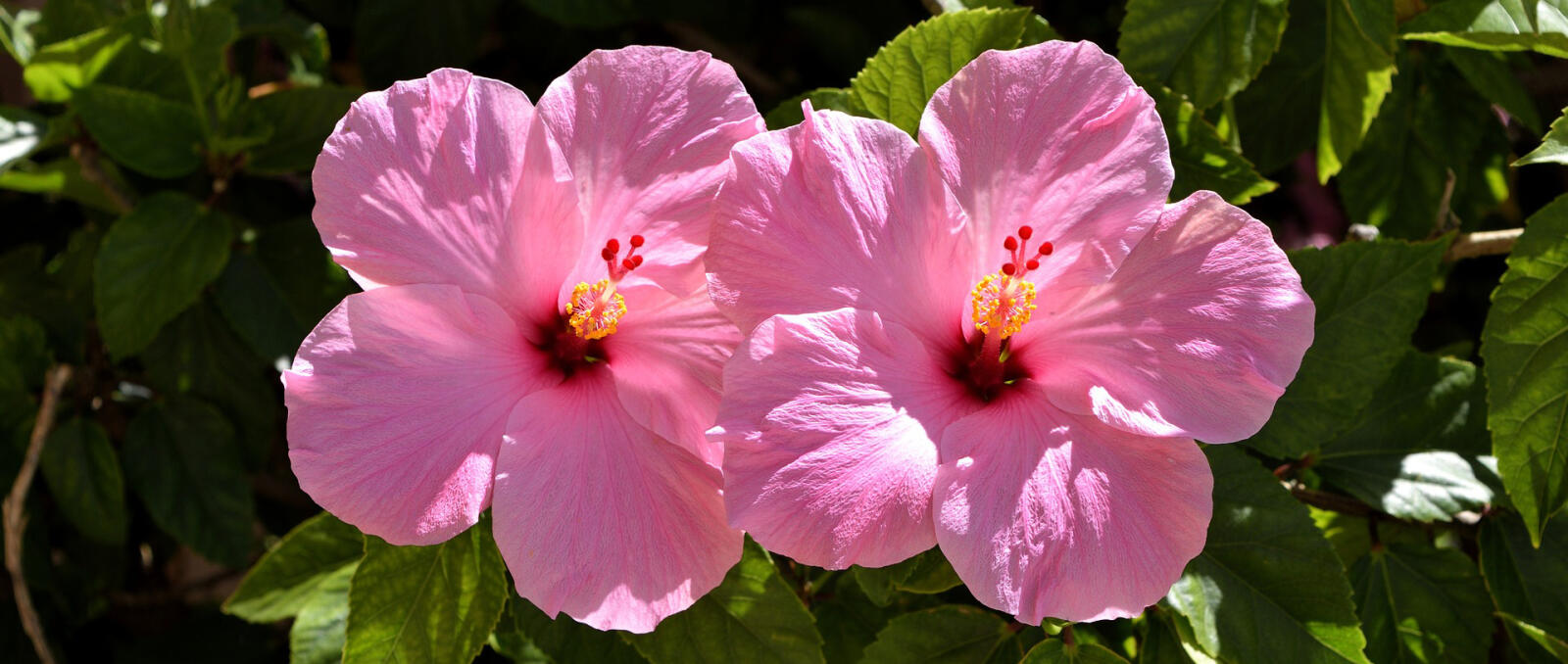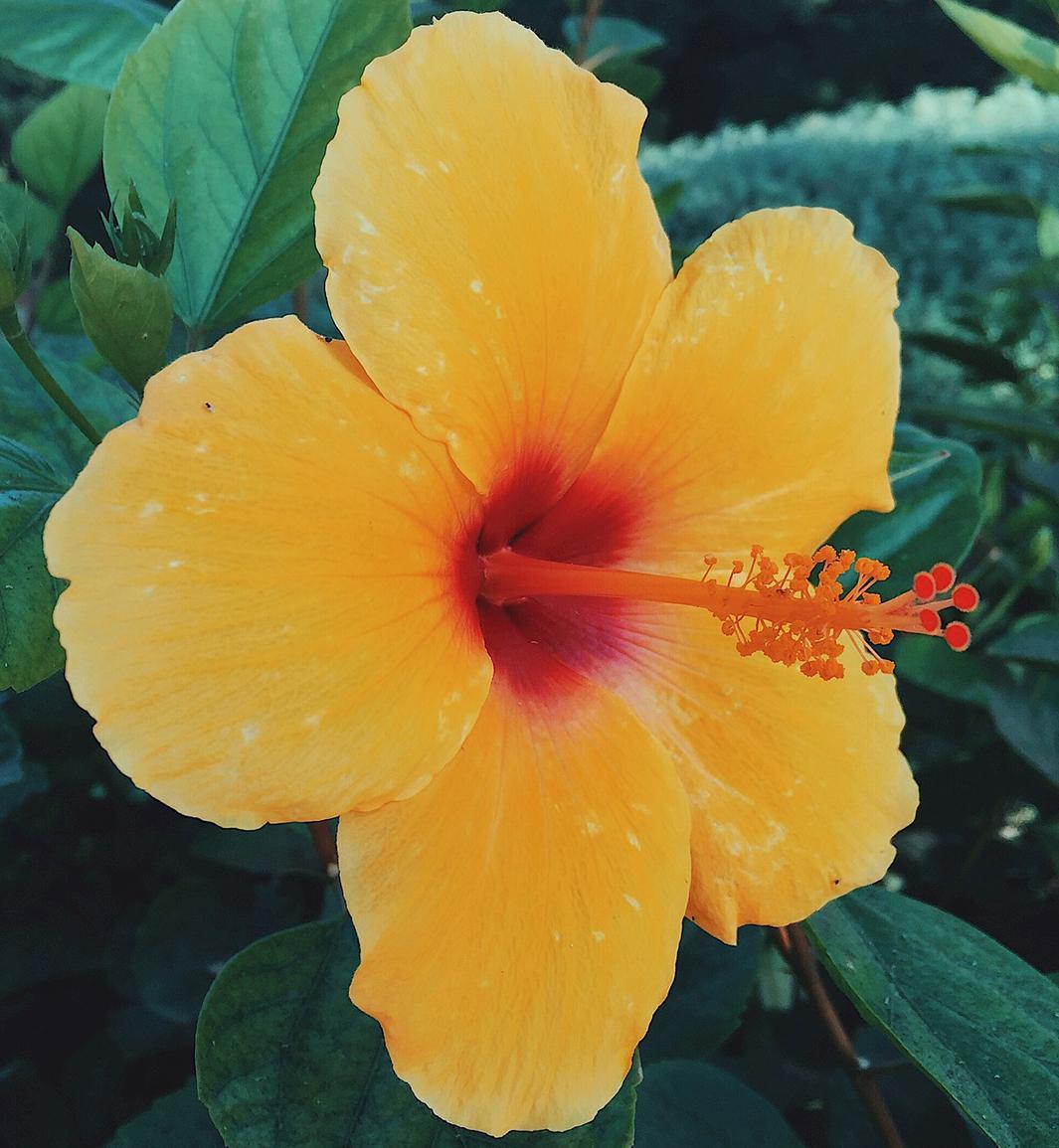
Hibiscus come in many shapes and sizes…
A familiar theme is that we confuse people by calling different plants by the same name… and that is true to a point – in that we get lazy and often call plants by a common ‘first’ name  and forget about the really important ‘last’ name bits. While not a perfect analogy - it is close enough to get a conversation started about some very neat ‘Hibiscus’ that are in bloom right now and gently get us thinking about those pesky Latin names.
and forget about the really important ‘last’ name bits. While not a perfect analogy - it is close enough to get a conversation started about some very neat ‘Hibiscus’ that are in bloom right now and gently get us thinking about those pesky Latin names.
We can thank the famous Swedish botanist Carl Linnaeus for the Latin names as he was the one back in the 1700’s who sorted out a process to keep all the different living organisms named using binominal nomenclature. Which is why in an Ontario summer we can be in a backyard and exclaim – ‘Wow – look at that hibiscus’ and be talking about anyone of a number of very different plants.
Could be easily any of:
- Hibiscus syriacus
- Hibiscus moscheutos
- Hibiscus rosa-sinensis
 Hibiscus syriacus is a native of Asia – although Linnaeus thought it was from Syria when he named it (there is Linnaeus again – popping up everywhere…) and has the common name Rose of Sharon by some – Rose Mallow by others… This is a winter hardy shrub that can get 2-4m tall and in mid-summer can be covered in flowers. The flowers typically do not last very long but the plant has so many blooms that it gives us a good show. The flowers are usually pink in colour - and all have that unique hibiscus look of a very large stamen.
Hibiscus syriacus is a native of Asia – although Linnaeus thought it was from Syria when he named it (there is Linnaeus again – popping up everywhere…) and has the common name Rose of Sharon by some – Rose Mallow by others… This is a winter hardy shrub that can get 2-4m tall and in mid-summer can be covered in flowers. The flowers typically do not last very long but the plant has so many blooms that it gives us a good show. The flowers are usually pink in colour - and all have that unique hibiscus look of a very large stamen.
 Hibiscus moscheutos are relatives to the above-mentioned Rose of Sharon. There is some fun newer breeding of this type of hibiscus with the cultivar ‘Luna Red’ earning a place in many gardens. ‘Luna Red’ only gets about 1m tall – and has very large – ok – huge – flowers. While most of the Hibiscus syriacus varieties get too tall and too lanky - Hibiscus moscheutos 'Luna Red' is easy to grow and needs minimal pruning.
Hibiscus moscheutos are relatives to the above-mentioned Rose of Sharon. There is some fun newer breeding of this type of hibiscus with the cultivar ‘Luna Red’ earning a place in many gardens. ‘Luna Red’ only gets about 1m tall – and has very large – ok – huge – flowers. While most of the Hibiscus syriacus varieties get too tall and too lanky - Hibiscus moscheutos 'Luna Red' is easy to grow and needs minimal pruning.
 Hibiscus rosa-sinensis can be in an Ontario garden too – although not as a shrub that can take our winters. This type of hibiscus often is called ‘Tropical Hibiscus’ and is for summer decks and patios only as it will freeze and die when the temps get below about -3C! The good news is that you can bring these evergreen types of hibiscus indoor over winter and then re-introduce them to the patio or deck every summer. There are many colours and flower sizes available of these tropical hibiscus and we like them as a nice splash of colour compared to the mostly green of the other common foliage plants we see in summer like banana or elephant-ears.
Hibiscus rosa-sinensis can be in an Ontario garden too – although not as a shrub that can take our winters. This type of hibiscus often is called ‘Tropical Hibiscus’ and is for summer decks and patios only as it will freeze and die when the temps get below about -3C! The good news is that you can bring these evergreen types of hibiscus indoor over winter and then re-introduce them to the patio or deck every summer. There are many colours and flower sizes available of these tropical hibiscus and we like them as a nice splash of colour compared to the mostly green of the other common foliage plants we see in summer like banana or elephant-ears.
So… enjoy hibiscus - and think not only of great summer colour but of a very old Swedish botanist!
• Landscape Care
